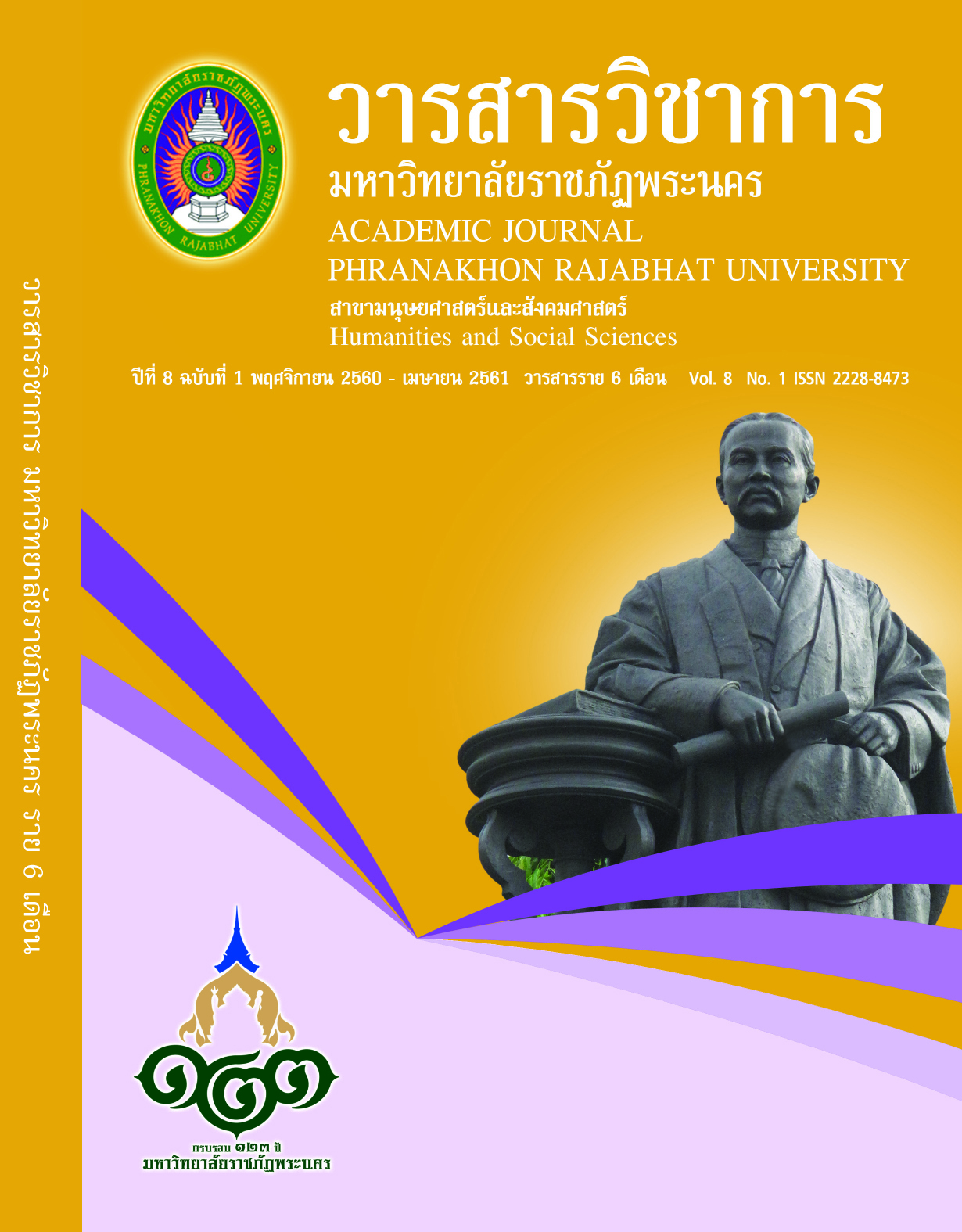วิเคราะห์เปรียบเทียบรูปแบบการแสดงเพลงตันหยงแบบไทยพุทธ และไทยมุสลิม
Keywords:
An Analysis and Comparison the performance of Tan-Yong, Tan-yong Performance of Thai Buddhist, Tan-yong Performance of Thai MuslimAbstract
The objectives of this dissertation are to study the history and the performance of Tan-Yong and also to analyze and compare performing elements of Tan-Yong performance of Thai Buddhist and that of Thai Muslim. The research methods are a literature review; interviews with southern folk musicians, performers, and experts; observation of Tan-Yong dance and singing demonstrations from Thai Buddhist and Thai Muslim performers; and focus group discussions to confirm the information. The findings are analyzed, summarized, and presented in the research.
This research finds that Tan-Yong performance is a mixture of folk culture and Malayu culture. It has been developed from Malayu folk dance called “Ra bum Chao Kor” and Portuguese classical dance. The performance is in the form of singing and dancing. The lyrics of the songs which have been translated into Thai are about courtship between men and women together with life principle teachings. The Tan-Yong performance of Thai Buddhist and that of Thai Muslim are similar in terms of forms, procedures, and performing elements; however, they are different in some details. First, Tan-Yong performance of Thai Buddhist has no guru worship ritual. Instead, it begins with a conga in order to draw the audience’s attention and to signal the beginning of the performance. Next, the songs are in the Thai language, with the introduction of the lyrics “Tan-Oei Tan-Yong”. As for the musical instruments, the violin is not used to create melodies. Rong-ngeng music is not also used in the singing but singers themselves create melodies to generate the rhythm of the songs. Additionally, the performer costume is a kebaya worn with a batik sarong and a scarf around the neck. The hair is tied up and decorated with flowers. The musicians wear a shirt, black trousers, and a head scarf. The Tan-Yong dance of Thai Buddhists has been adapted to be similar to Thai classical dance and does not focus on hip movements. On the other hand, Tan-Yong performance of Thai Muslim is started with a guru worship ritual in which “Lahudua” music is played. Next, the lyrics of the songs used in Tan-Yong performance of Thai Muslim are introduced with the words “Bu-Nga Tan-Yong”. Unlike, Tan-Yong performance of Thai Buddhist, the violin is used to create melodies of the songs. The performer costume is a kebaya worn with a ready-to-wear batik sarong. The dance has been developed from Rong-ngeng dance of Malayu, which focuses on hip movements.
References
กิตติชัย รัตนพันธ์. (2549). ดนตรี-นาฏศิลป์พื้นบ้านภาคใต้. กรุงเทพฯ: สำนักพิมพ์โอเดี่ยนสโตร์.
นพศักดิ์ นาคเสนา. (2546). นาฏยประดิษฐ์: ระบำพื้นเมืองภาคใต้. วิทยานิพนธ์ศิลปศาสตรมหาบัณฑิต, สาขานาฏศิลป์ไทยภาควิชานาฏยศิลป์คณะศิลปกรรมศาสตร์,จุฬาลงกรณ์มหาวิทยาลัย
สมบูรณ์ คำลือ. สัมภาษณ์, 16 ธันวาคม 2558.
สาลินี กลันตัน. สัมภาษณ์, 20 ตุลาคม 2558.
อภิณัฐถา ทองเกลี้ยง. (2552). ศึกษาศิลปะพื้นบ้านรองเง็งในพื้นที่เกาะลันตา จังหวัดกระบี่.วิทยานิพนธ์ศิลปศาสตรมหาบัณฑิต,สาขาวิชาไทยคดีศึกษา, มหาวิทยาลัยทักษิณ.
Downloads
Published
How to Cite
Issue
Section
License
"บทความวิชาการในวารสารฉบับนี้ ถือเป็นความรับผิดชอบของผู้เขียนเท่านั้น"
สงวนลิขสิทธิ์ตามพระราชบัญญัติลิขสิทธิ์




